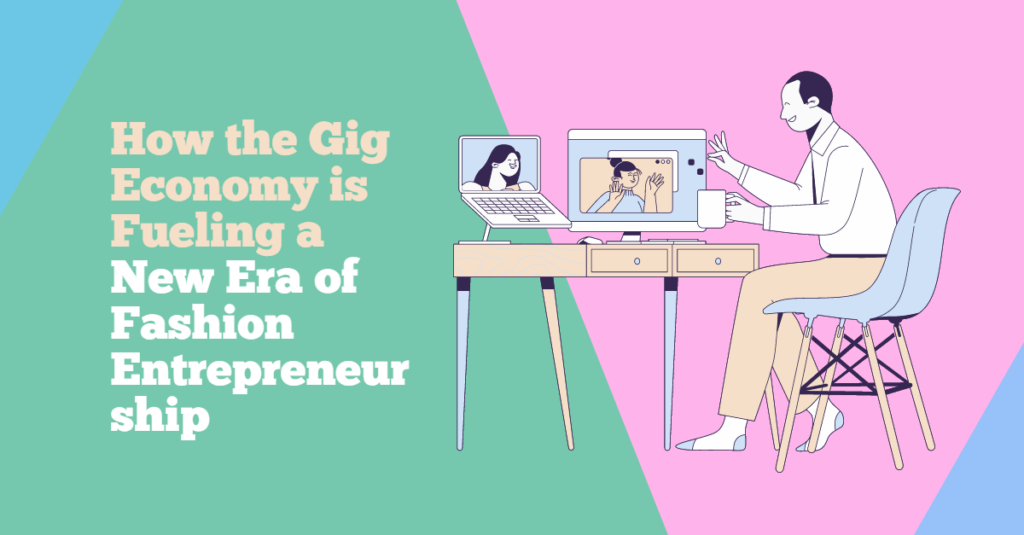How the Gig Economy is Fueling a New Era of Fashion Entrepreneurship
The rise of the gig economy has been a major force in changing the way we work, and it has had a significant impact on the fashion industry. Fashion entrepreneurship has traditionally been a difficult and exclusive field to break into, but the gig economy has opened up new opportunities for aspiring fashion entrepreneurs to launch their careers and build successful businesses. With the emergence of freelance work, direct-to-consumer models, and community-driven collaborations, fashion entrepreneurs have more ways than ever before to bring their creative ideas to market. This new era of fashion entrepreneurship is also driven by trends such as the rise of e-commerce, the increased demand for personalized and niche products, and a focus on sustainability and social responsibility. However, this new era also presents its own set of challenges, such as increased competition and the lack of traditional job security. This article will explore the ways in which the gig economy is transforming the fashion industry and what this means for fashion entrepreneurs.
- The Gig Economy and the Fashion Industry
The gig economy is a new economic model that has emerged in recent years, facilitated by technology and online platforms. It involves the creation of temporary or freelance jobs, as opposed to permanent full-time positions. Workers in the gig economy are known as freelancers, gig workers, or independent contractors. They work on short-term projects, often for multiple clients, and are paid for their work on a project-by-project basis.
The fashion industry has traditionally been a difficult industry to break into, with high barriers to entry and significant start-up costs. However, the gig economy has changed this. It has allowed fashion entrepreneurs to showcase their designs to a global audience, build their brand, and connect with customers without the need for a physical store or significant start-up capital. The gig economy has created a level playing field for fashion entrepreneurs, allowing them to compete with established fashion brands.
One of the primary benefits of the gig economy for fashion entrepreneurs is the ability to reach a global audience. Online marketplaces such as Etsy, Amazon, and Shopify have made it easier for fashion entrepreneurs to sell their designs to customers worldwide. These platforms provide entrepreneurs with access to a vast customer base, which would have been difficult to reach through traditional retail channels. In addition, social media platforms such as Instagram, Facebook, and Pinterest have made it easier for entrepreneurs to promote their brands and showcase their designs.
Another benefit of the gig economy for fashion entrepreneurs is the ability to work on multiple projects for multiple clients. This means that entrepreneurs can diversify their income streams and reduce their reliance on a single source of income. They can work on different projects that suit their skills and interests, such as designing clothes, creating accessories, or developing patterns. This not only provides entrepreneurs with greater job security, but it also allows them to build their skills and experience in different areas of fashion. Read more about How the Gig Economy is Fueling a New Era of Fashion Entrepreneurship.
- The Benefits of the Gig Economy for Consumers
The gig economy has also brought significant benefits for consumers. One of the primary benefits is the ability to access a wide range of fashion designs and products from different entrepreneurs worldwide. Online marketplaces have made it easier for consumers to discover new fashion brands and designs, as well as to purchase unique and original products that are not available through traditional retail channels. This has led to an increase in consumer demand for unique and sustainable fashion products, which has created a new market for fashion entrepreneurs.
Another benefit of the gig economy for consumers is the ability to interact with fashion entrepreneurs directly. This has created a more personalized and authentic shopping experience, where consumers can learn about the story behind the brand and the inspiration for the designs. Fashion entrepreneurs can also respond to customer feedback and adapt their designs to meet customer needs and preferences. This has led to an increase in customer loyalty and a sense of community around fashion brands.
Finally, the gig economy has created a more sustainable fashion industry. Fashion entrepreneurs who operate in the gig economy are more likely to use sustainable and ethical practices in their production processes. This is because they are more connected to their customers and are more responsive to their needs and preferences. Fashion entrepreneurs who operate in the gig economy are also more likely to use local and organic materials, which reduces the carbon footprint of the fashion industry. This has led to a shift towards more sustainable fashion practices and a growing awareness of the environmental and social impact of the fashion industry. Read more about How the Gig Economy is Fueling a New Era of Fashion Entrepreneurship.
- Challenges and Opportunities in the Gig Economy
While the gig economy has created new opportunities for fashion entrepreneurs, it also comes with its own set of challenges. One of the primary challenges is the lack of job security and benefits that come with traditional full-time employment. Gig workers are responsible for their own healthcare, retirement savings, and other benefits, which can be a significant financial burden.
Another challenge is the lack of regulation in the gig economy. Fashion entrepreneurs who operate on online marketplaces may be subject to counterfeit products, intellectual property theft, and other forms of fraud. The lack of regulation also makes it difficult to ensure that workers are paid fairly and that their rights are protected.
Despite these challenges, the gig economy also presents significant opportunities for fashion entrepreneurs. With the rise of sustainable and ethical fashion practices, there is a growing demand for unique and authentic fashion products. This has created a new market for fashion entrepreneurs who prioritize sustainability and ethical production practices. Additionally, the gig economy has provided a platform for underrepresented groups in the fashion industry, such as women, people of color, and LGBTQ+ individuals, to showcase their designs and build their brands.
Conclusion
The gig economy has disrupted the fashion industry and created new opportunities for fashion entrepreneurs. Online marketplaces and social media platforms have made it easier for entrepreneurs to showcase their designs, build their brands, and connect with customers. The gig economy has also created a more sustainable and ethical fashion industry, with a growing demand for unique and authentic fashion products.
However, the gig economy also comes with its own set of challenges, such as the lack of job security and benefits and the lack of regulation. Despite these challenges, the gig economy presents significant opportunities for fashion entrepreneurs who prioritize sustainability and ethical production practices. It has created a more diverse and inclusive fashion industry, with underrepresented groups having a greater opportunity to showcase their designs and build their brands.
The gig economy has fueled a new era of fashion entrepreneurship, and it will continue to shape the future of the fashion industry in the years to come. As the fashion industry continues to evolve, it is important to recognize the role of the gig economy in creating a more sustainable, diverse, and inclusive industry that benefits both entrepreneurs and consumers alike.

My name is Rohit Vagh and I’m a content writer specializing in fashion and lifestyle. I have three years of experience in this field and have written various articles. My writing style is creative and engaging, and I strive to create content that resonates with my readers. I have a deep passion for fashion and am constantly researching the latest trends and styles to make sure my readers are up to date. I’m excited to continue my career in blogging, and I’m always looking for new opportunities in the fashion and lifestyle space.





